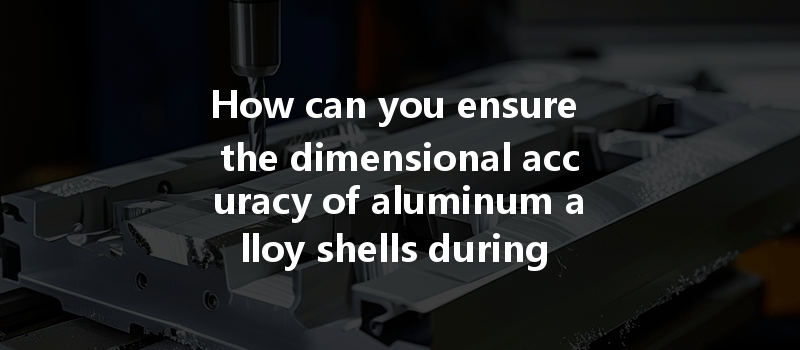Opening:
Did you know that improper CNC machining can lead to dimensional inaccuracies costing businesses thousands in rework and lost time? In the competitive landscape of manufacturing, ensuring the dimensional accuracy of aluminum alloy shells is not just a matter of precision; it’s a crucial factor for success and sustainability. As industries expand the use of aluminum alloys for their lightweight and corrosion-resistant properties, understanding how to achieve and maintain dimensional accuracy during CNC processing has become increasingly vital.
Content:
Understanding CNC Machining: A Brief Overview
Computer Numerical Control (CNC) machining is a streamlined manufacturing process that utilizes computer-controlled machinery to fabricate components from various materials. This technology has revolutionized the way we manufacture parts, particularly in industries like aerospace, automotive, and electronics. The precision and repeatability offered by CNC machining make it an ideal choice for creating intricate parts, especially aluminum alloy shells, which are known for their desirable mechanical properties.
The Importance of Dimensional Accuracy
Dimensional accuracy is the degree to which a manufactured part matches the intended design specifications. For aluminum alloy shells, precise dimensions are critical for ensuring proper fit and function within the larger assembly. Inaccuracies can lead to issues such as misalignment, increased wear, or even product failure, all of which can jeopardize the functionality and safety of the final product.
Key Factors Affecting Dimensional Accuracy in CNC Machining
To ensure dimensional accuracy in the CNC machining of aluminum alloy shells, several key factors must be carefully managed:
Regular calibration and maintenance of CNC machines are paramount. A well-calibrated machine will produce more accurate cuts, leading to better dimensional consistency. Operators should routinely check the machine’s components, including axes, spindles, and tool holders, to prevent wear and tear from affecting performance.
Choosing the right tooling is essential for achieving accuracy. The tools must be suited for the specific type of aluminum alloy being machined. High-quality carbide tools are often preferred for their durability and precision, but regular maintenance is necessary to ensure that they are sharp and effective.
The settings for spindle speed, feed rate, and depth of cut significantly impact machining accuracy. Selecting appropriate cutting parameters can minimize tool deflection and vibrations, both of which can lead to inaccuracies. Manufacturers should conduct tests to determine the optimal settings for their specific materials and processes.

The secure positioning of the workpiece is crucial. Proper fixturing minimizes movement during the machining process. Custom fixtures designed specifically for aluminum alloy shells can enhance dimensional accuracy. Manufacturers should ensure that components are firmly held in place to resist any potential shifting during machining.
Temperature fluctuations can cause thermal expansion, impacting the dimension of both the workpiece and the tooling. Maintaining a stable manufacturing environment, including regulated temperature and humidity, is essential for maintaining accuracy.
After machining, aluminum alloy shells may undergo secondary processes, such as cleaning, coating, or assembling. It’s important to ensure that these processes do not affect the dimensional accuracy achieved during CNC machining. Handling procedures must be carefully managed to avoid introducing any distortions or damages.
Implementing Quality Control Measures
To further guarantee dimensional accuracy, implementing robust quality control measures is vital. This can include:
Achieving dimensional accuracy during CNC machining of aluminum alloy shells requires a comprehensive approach encompassing proper equipment, precise techniques, and consistent quality control measures. By understanding and addressing the various factors that influence accuracy — including machine maintenance, tool selection, cutting parameters, fixturing, environmental conditions, and post-machining processes — manufacturers can ensure that their products meet exact specifications, fostering customer satisfaction and competitive advantage.
In today’s manufacturing arena, where accuracy is synonymous with quality, this blog serves as a valuable resource for industry professionals who seek to optimize their CNC processes. As technology continues to evolve, staying informed and implementing best practices in dimensional accuracy is not just advisable; it is essential for success in manufacturing. The future of production relies on our ability to adapt and refine our processes, making it vital to prioritize accuracy in every project we undertake.
By embracing the knowledge shared in this blog, manufacturers can significantly enhance their operational efficiency and product quality, ensuring that their aluminum alloy shells are not just manufactured, but engineered to perfection.






